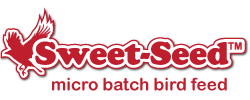Protecting Hummingbird Feeders From Storms

Hummingbirds are feisty little birds, but their tiny size does make them easily tossed about or injured in severe storms. Hummingbird feeders can be just as delicate and can be easily damaged during poor weather, and a damaged feeder is no use to a hungry hummer. Fortunately, it’s easy to protect hummingbird feeders from storms and ensure that these little birds always have a clean, nutritious food source to visit.
How Storms Damage Feeders
Different storms can damage hummingbird feeders in different ways. Storms with heavy rain and wind can do the most damage, but even a storm that may not seem too severe can still damage hummingbird nectar feeders. Depending on the storm, damage may include…
- Twisted or Tilted Feeders – This can cause leaks, spills, and wasted nectar, and may damage hangers, hanging wires, or hooks.
- Fallen Feeders – A drop or fall may cause breakage or warping of different feeder parts, or the feeder could be completely destroyed.
- Diluted Nectar – If rain gets into a feeder, the nectar may be diluted and a weaker nectar solution won’t appeal to hungry hummers.
- Attracted Pests – A leaky hummingbird feeder or one that has spilled nectar may attract unwanted pests, such as insects, rats, raccoons, or even bears.
It can be disheartening to need to replace or repair feeders after each storm, especially in an area where severe weather can be frequent. Birders who take steps to protect feeders, however, can minimize the risk of damage and keep hummingbirds well-fed in any weather.
Protecting Nectar Feeders From Storms
It is easy to keep hummingbird feeders safe and secure during inclement weather with simple steps, including…
- Staying Alert – Be aware of upcoming weather forecasts and the possibility of severe weather. This will give you time to prepare and keep feeders safe and protected.
- Choosing Durable Feeder Designs – A feeder constructed from tempered glass, recycled plastic, or metal is likely to be more durable and resist damage, even in challenging conditions.
- Using Larger Feeders – A feeder with a bigger capacity will be heavier and less prone to sway or twist in breezy conditions. With less movement, the feeder will not leak as easily.
- Filling Feeders Before Storms – Refilling a hummingbird feeder before a storm ensures the birds have plenty of food to access, and will keep the feeder heavier for less movement.
- Using Overcurved Hooks – Use a sharply curved hook to hang a hummingbird feeder and it will be less likely to sway or tilt far enough to fall in a storm, even in severe winds.
- Positioning Feeders Out of the Wind – Choose hummingbird feeder placement with breezes in mind, and place feeders in more sheltered, protected locations to prevent storm damage.
- Removing Feeders Before Storms – If a storm looks to be too severe for feeders, it may be best to take feeders down shortly before the storm arrives to prevent any risk of damage.
The more steps that can be taken to protect hummingbird feeders from storms, the more likely it is that feeders will survive severe wind, drenching rain, and other harsh conditions and be ready to nourish hummingbirds as soon as the weather clears.
After the Storm
After the storm passes, hummingbird feeders should be inspected right away for any signs of damage, or if the feeders were taken down for protection, they should be replaced as soon as possible for hummingbirds to refuel. This is especially critical if nectar-producing flowers and plants may have been damaged, and natural food sources could be temporarily scarce after a storm. Any nectar left in the feeder should also be closely examined for signs of contamination, such as cloudiness, black specks, or dead insects. Ideally, the nectar should be replaced and the feeder cleaned after every storm, just to ensure it is safe and healthy.
Protecting hummingbird feeders from storms isn’t hard, but it is essential to be sure these tiny birds have safe, nutritious food to enjoy even when the weather may make visiting flowers and feeders more challenging.
